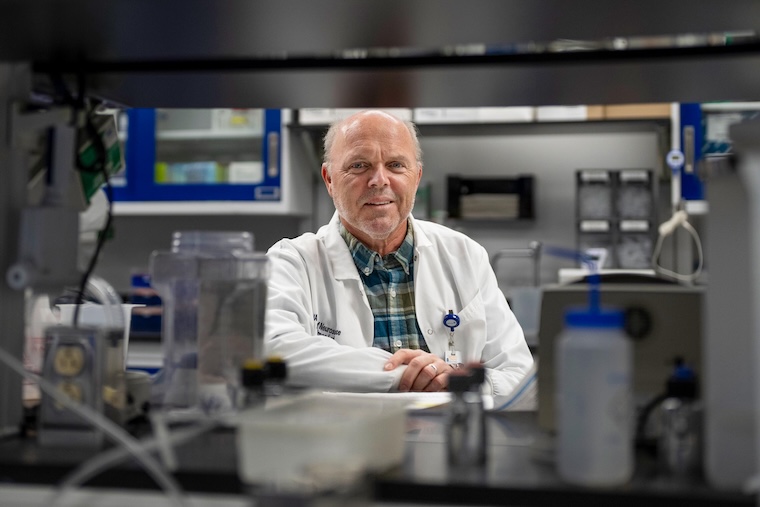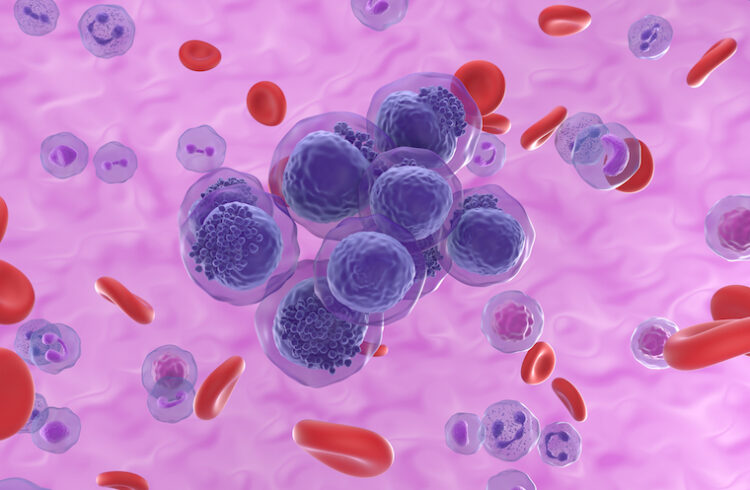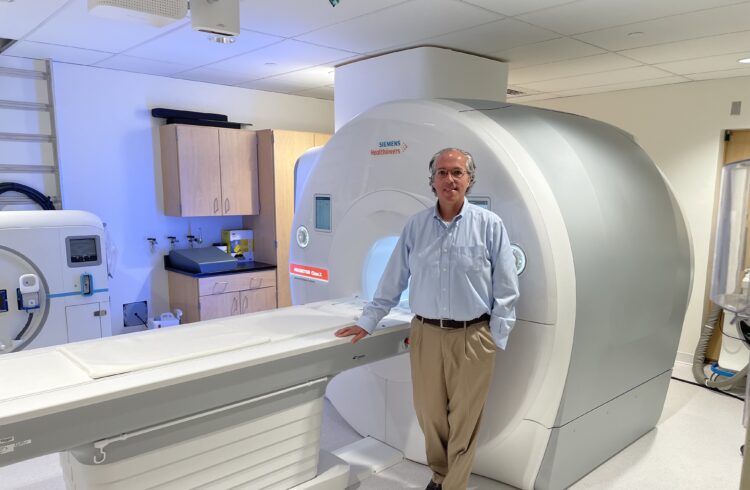
The School of Medicine's Harald Sontheimer, PhD, and his team determined that the failure to recognize family, friends and caregivers seen in Alzheimer's disease is caused by the breakdown of protective “nets” that surround neurons in the brain.
One of the most devastating moments for family members of a patient with Alzheimer’s is when their loved one forgets who they are. New School of Medicine research may explain why that happens and could lead to a way to prevent it.
UVA’s Harald Sontheimer, PhD, and graduate student Lata Chaunsali and their colleagues found that the failure to recognize family, friends and caregivers is caused by the breakdown of protective “nets” that surround neurons in the brain. Preventing the loss of these nets in lab mice protected the mice from losing their memories of previous social interactions.
The results offer an exciting target for the development of new treatments to benefit Alzheimer’s patients, the researchers say.
“Finding a structural change that explains a specific memory loss in Alzheimer’s is very exciting,” said Sontheimer, chair of UVA’s Department of Neuroscience and member of the UVA Brain Institute. “It is a completely new target, and we already have suitable drug candidates in hand.”
Alzheimer’s: A Growing Problem
Alzheimer’s affects 55 million people around the world, and that number is expected to grow by 35% in the next five years alone. In response, UVA has established the Harrison Family Translational Research Center in Alzheimer’s and Neurodegenerative Diseases as part of its Paul and Diane Manning Institute of Biotechnology. The institute aims to accelerate the development of new treatments and cures for some of the world’s most challenging diseases, including Alzheimer’s.
Sontheimer’s new work sheds important light on the development of the disease. He and his team previously revealed the importance of what are called “perineuronal nets” in the brain. These net-like structures surround nerve cells called neurons and perform a critical barrier function that lets neurons communicate correctly. These communications allow the neurons to form and store new memories.
Based on those results, Sontheimer and his collaborators suspected that disruptions of the nets could be a critical turning point in Alzheimer’s. Their latest work bears that out: The scientists found that lab mice that had faulty nets lost their ability to remember other mice – their “social memory” – even as they could still form new memories of objects in their environment. This mirrors what is seen in people with Alzheimer’s, where social memory often fails before object memory.
Sontheimer and his team then used “MMP inhibitors” – a class of drugs already being investigated for their potential to treat cancer and arthritis – to see if they could prevent the loss of the perineuronal nets. It worked. The approach staved off the degradation of the nets and preserved the mice’s social memory.
“In Alzheimer’s disease, people have trouble remembering their family and friends due to the loss of a memory known as social memory. We found that the net-like coating known as perineuronal nets protects these social memories. In our research with mice, when we kept these brain structures safe early in life, the mice suffering from this disease were better at remembering their social interactions,” Chaunsali said. “Our research will help us get closer to finding a new, non-traditional way to treat or better yet prevent Alzheimer’s disease, something that is much needed today.”
The changes the scientists saw in the mice’s brains align with those seen in human patients with Alzheimer’s, suggesting that the targeting the nets in people could provide similar benefits. Developing a treatment based on the findings will require additional research, but Sontheimer and Chaunsali are hopeful about what the future could hold.
“Although we have drugs that can delay the loss of perineuronal nets, and thereby delay memory loss in disease, more research needs to be done regarding safety and effectiveness of our approach before this can be considered in humans,” Sontheimer said. “One of the most interesting aspect of our research is the fact that the loss of perineuronal nets observed in our studies occurred completely independent of amyloid and plaque pathology, adding to the suspicion that those protein aggregates may not be causal of disease.”
Findings Published
The researchers have published their findings in the journal Alzheimer’s & Dementia: The Journal of the Alzheimer’s Association. The article is open access, meaning it is free to read. The research team consisted of Chaunsali, Jiangtao Li, Erik Fleischel, Courtney E. Prim, Izabela Kasprzak, Shan Jiang, Silky Hou, Miguel Escalante, Elise C. Cope, Michelle L. Olsen, Bhanu P. Tewari and Sontheimer. The scientists have no financial interest in the work.
The research was supported by the National Institutes of Health, grants R01AG065836, R01NS036692, and R01NS123069; The Owens Family Foundation; a Wagner fellowship; and a Double Hoo fellowship.
To keep up with the latest medical research news from UVA, subscribe to the Making of Medicine blog.



